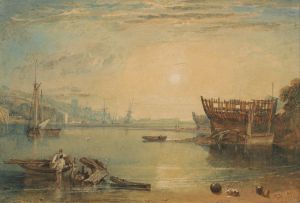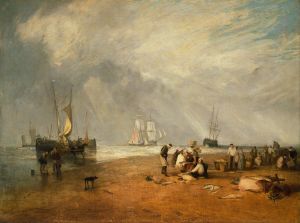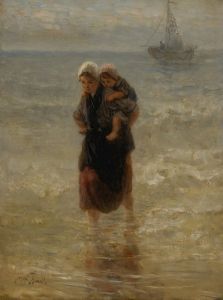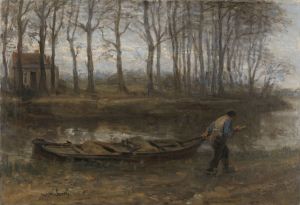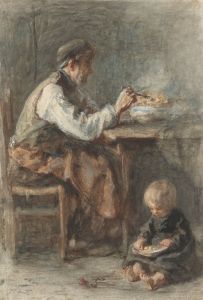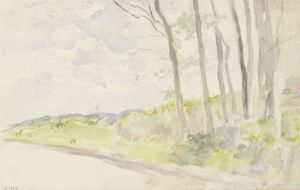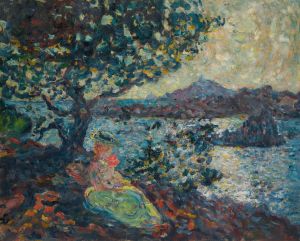
Mending the Nets
A hand-painted replica of Jozef Israëls’s masterpiece Mending the Nets, meticulously crafted by professional artists to capture the true essence of the original. Each piece is created with museum-quality canvas and rare mineral pigments, carefully painted by experienced artists with delicate brushstrokes and rich, layered colors to perfectly recreate the texture of the original artwork. Unlike machine-printed reproductions, this hand-painted version brings the painting to life, infused with the artist’s emotions and skill in every stroke. Whether for personal collection or home decoration, it instantly elevates the artistic atmosphere of any space.
"Mending the Nets" is a notable painting by the Dutch artist Jozef Israëls, created in 1882. Israëls, born on January 27, 1824, in Groningen, Netherlands, was a leading figure in the Hague School, a group of artists who were influenced by the realism of the Barbizon School in France. His works often depicted the daily lives of fishermen and peasants, capturing their struggles and resilience with a profound sense of empathy and realism.
The painting "Mending the Nets" exemplifies Israëls' focus on the lives of the working class. It portrays a group of fishermen engaged in the laborious task of repairing their fishing nets. The scene is set in a humble, dimly lit interior, which adds to the somber and reflective mood of the painting. The fishermen are depicted with great attention to detail, highlighting their weathered faces and worn clothing, which speak to the hardships of their daily lives.
Israëls' use of light and shadow in "Mending the Nets" is particularly noteworthy. The light source, presumably coming from a window or an open door, softly illuminates the figures and their surroundings, creating a sense of intimacy and immediacy. This technique not only enhances the realism of the scene but also draws the viewer's attention to the central activity of mending the nets, emphasizing its importance in the fishermen's lives.
The composition of the painting is carefully balanced, with the figures arranged in a way that guides the viewer's eye through the scene. The central figure, likely the most experienced fisherman, is seated and deeply focused on his task, while the others, including a younger boy, assist him. This arrangement not only highlights the communal nature of the work but also suggests the passing down of skills and traditions from one generation to the next.
"Mending the Nets" reflects Israëls' broader artistic philosophy, which was deeply rooted in the depiction of everyday life and the dignity of labor. His works often carried a moral and social message, advocating for the recognition and appreciation of the working class. This painting, like many of his others, invites viewers to reflect on the value of hard work and the strength of community bonds.
Jozef Israëls' influence extended beyond his own time, as he inspired many other artists in the Hague School and beyond. His ability to capture the essence of human experience with compassion and realism earned him a prominent place in the history of Dutch art. "Mending the Nets" remains a testament to his skill and his commitment to portraying the lives of ordinary people with honesty and respect.
Today, "Mending the Nets" is held in high regard and is part of various public and private collections. It continues to be studied and admired for its artistic merit and its poignant depiction of a way of life that, while specific to a particular time and place, resonates universally.







